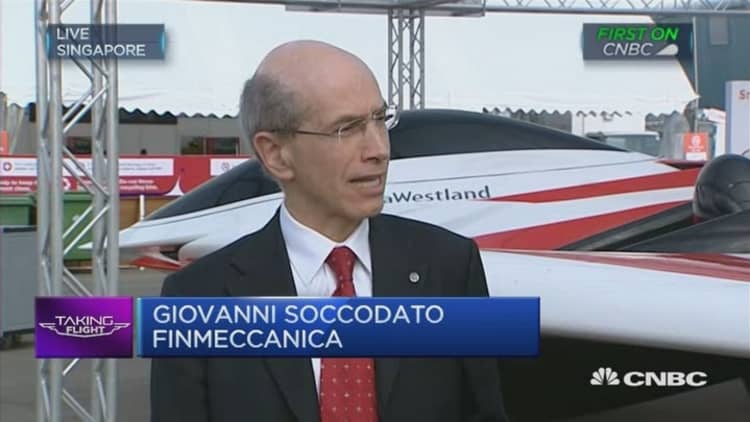
The helicopter of the future is going electric, but it's waiting on carmakers to design the battery.
Project Zero, which is billed as the first all-electric vertical takeoff and landing aircraft, is on display at the Singapore Airshow, offering a glimpse at a tilt-rotor "concept."
Built by AgustaWestland, a unit of Italy's Finmeccanica, it aims to eliminate the use of fuel. This would open the possibility of using the aircraft in low-to-no oxygen environments, which could range anywhere from getting close to active volcanos to use on Mars, James Wang, AgustaWestland's senior vice-president of helicopters and services marketing, told CNBC.

Internal combustion engines require oxygen to run, but an electric motor doesn't, Wang explained. Eventually, he hopes the aircraft can be self-charging, using the rotors as windmills.
But it's not getting to Mars quite yet.
Its current range is around 10 minutes of flight, Wang said. But he was hopeful that within a decade, automakers would have advanced the development of electric batteries to the point that Project Zero will travel for around 100 minutes.
The prototype, called a convertiplane, didn't even fly into the airshow. AugustaWestland disassemble the wings and sent it by sea in two shipping containers.
It's also not exactly a passenger craft, currently sized to carry only a single pilot or to be used unmanned.
AgustaWestland is currently working on a hybrid version of the engine, combining electric with diesel to extend the flight range to as much as an hour, Wang said.
Correction: The helicopter company behind Project Zero is AgustaWestland.


